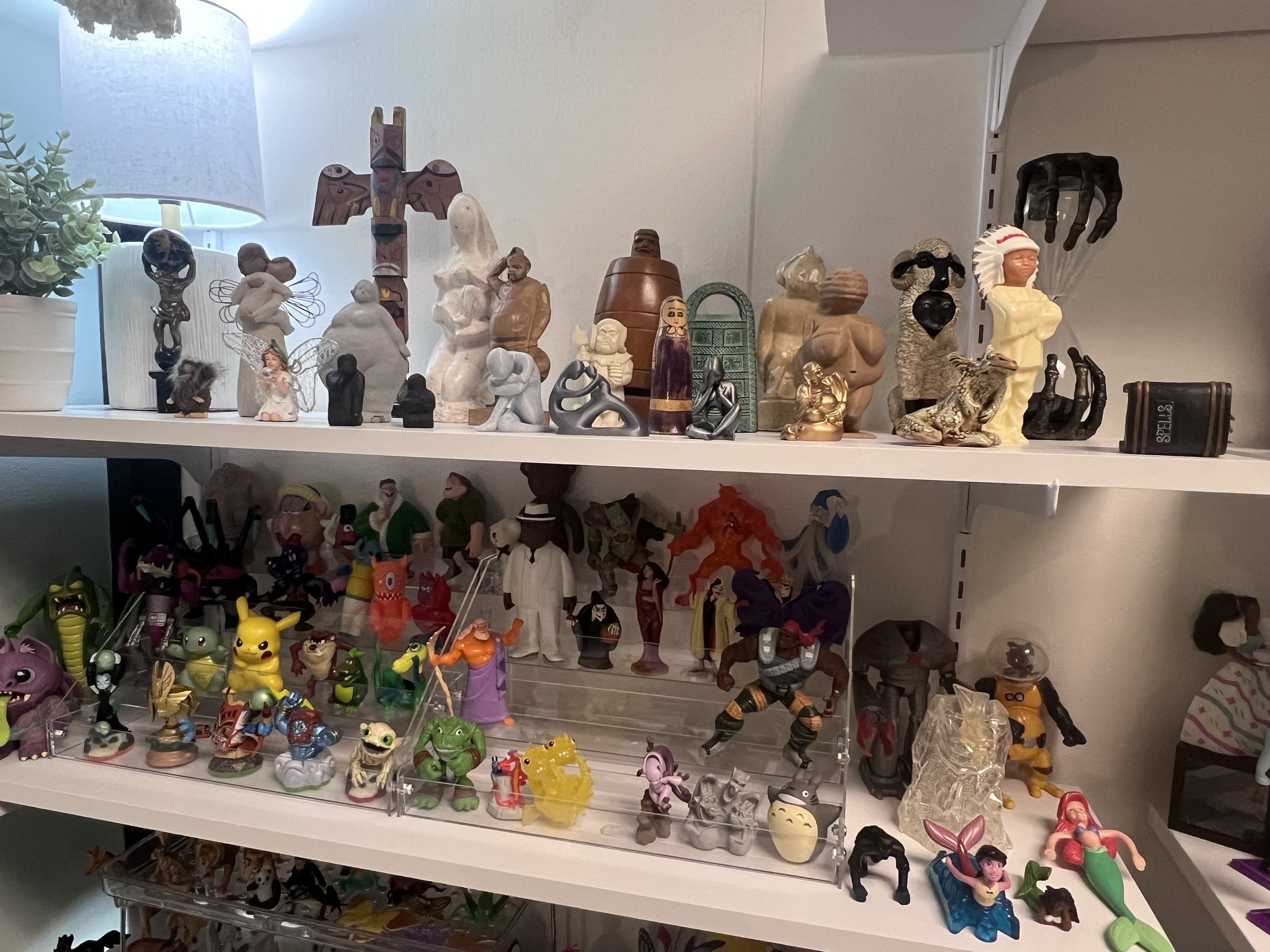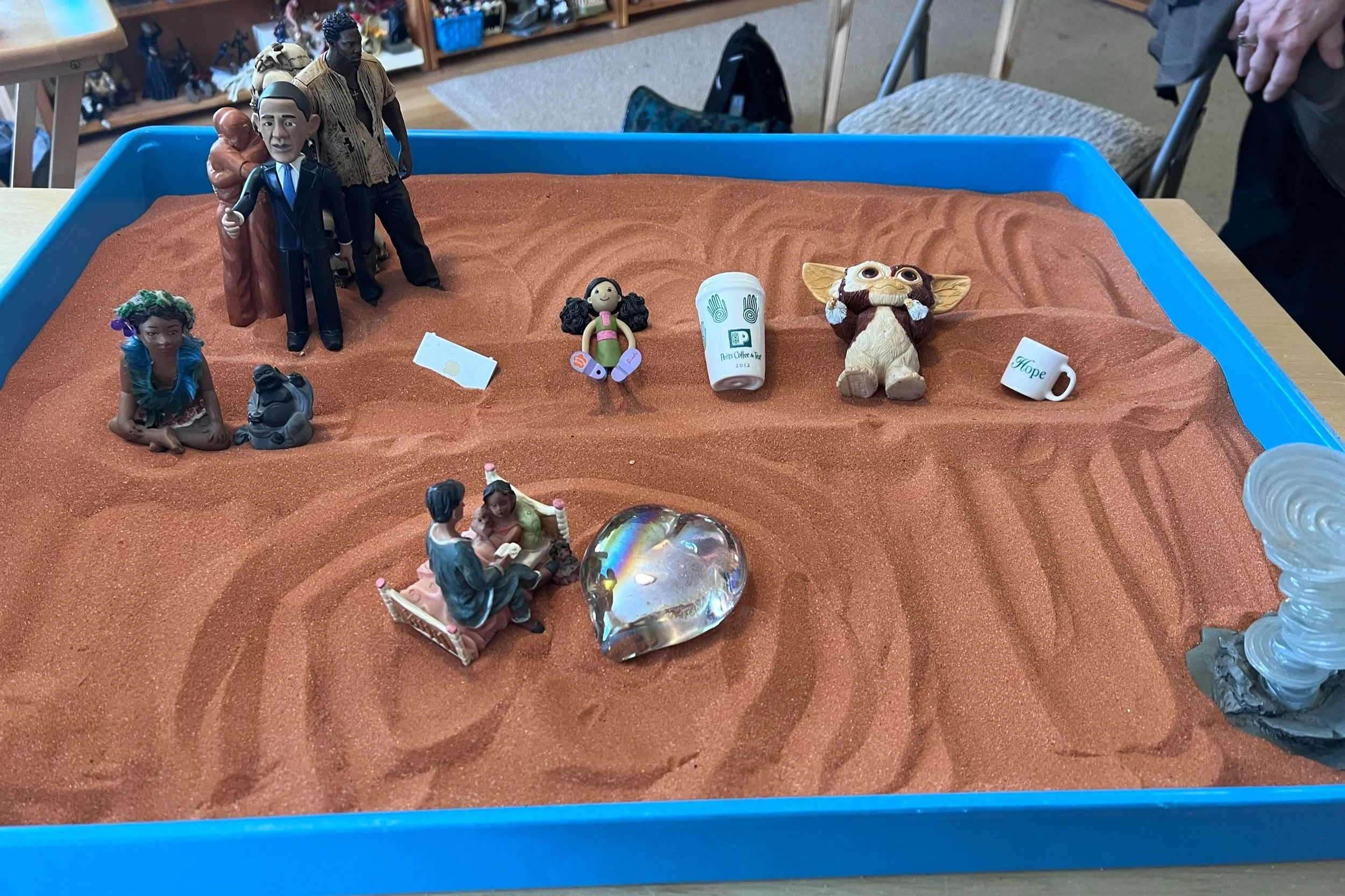SANDTRAY THERAPY
What is Sandtray?
Sandtray therapy is a (predominantly) non-verbal approach of expression through the use of a tray of sand and figurines.
Advantages of Sandtray
If you’re nervous to talk about something or don’t know how to talk about something, Sandtray is a great way to process difficult emotions without getting overwhelmed by the experience. It’s also a great place to experience control when the feeling of control or a sense of safety is something you’re looking for.
Clients may experience emotional release through symbolization and sublimation and through projection onto the tray and figurines. The interpretation of the sandtray is not essential for the healing process so any amount of talking is appropriate and welcomed.
Sandtray is an effective intervention for distress, crisis, and trauma. The simple act of combing the sand helps with self regulation and soothes the limbic system. Many clients often feel relaxed and calm after a sandtray session because of this.
Sand is grounding, soothing, and kinesthetic
Sand play allows for healthy regression
Sand is 3 dimensional and can be built on or under the surface. This allows the client to control how much is seen.
The tray is just the right size to express intensity and still be safe. In addition, I have several different types of therapeutic sand to choose from - you’ll find that you may be drawn to a different sand each session.
Sandtray allows for safe expression of traumatic responses
Provides a space to express emotions/situations/issues that are too hard to speak about
Allows for metaphors to emerge
Client is in control of how much to tell about their world, verbally
Solutions often emerge
Creates bridges between the unconscious and conscious
How does it work?
Processing an experience can be complicated because our head may say one thing while our emotions and bodies feel another.
When we live through a significant experience, nonverbal information is received by the body first, then comes up to the brain (we call this, ‘bottom up’) where linguistics then get attached to it. It then gets laid down in the right hemisphere of the brain (where there are no words). That can make it difficult to verbally express ourselves.
During sandtray, when you’re using the left and right brain (your whole body), you’re able to bypass the blocks or any objections/defenses that the left brain has to the information being expressed by the right brain. In short, expression through your body into the sandtray is uninhibited by any ‘shoulds’ that we may normally feel when verbally expressing ourselves.
Who should use Sandtray?
Members of marginalized communities! Do you ever feel like it’s a lot of work to explain yourself to someone? Then sandtray is a wonderfully inclusive way to meet yourself in a safe and protected space that’s unique to you. It’s naturally non-discriminatory in it’s approach which creates space for ancestral work and healing to also occur!
Figurines and miniatures express all aspects of the world - symbolic, spiritual, cultural, even the dark side. Sand itself is a natural element of the earth with innate history coming from all corners of the world and touching all types of life.
Those that are introverted and tense - tactile interaction with the sand reduces tension and anxiety
Those who are hyperactive and/or have hysterical tendencies - creating a scene in the sand tray can assist clients to focus
Those who over-verbalize. Over-verbalizing can be a defense mechanism, avoidance or resistance measure
Those who rationalize and/or intellectualize. They also tend to have difficulty getting in touch with their feelings
Those who have trouble verbalizing. Sandtray allows clients to direct, be in charge, to control, to build and to destroy in a safe way




